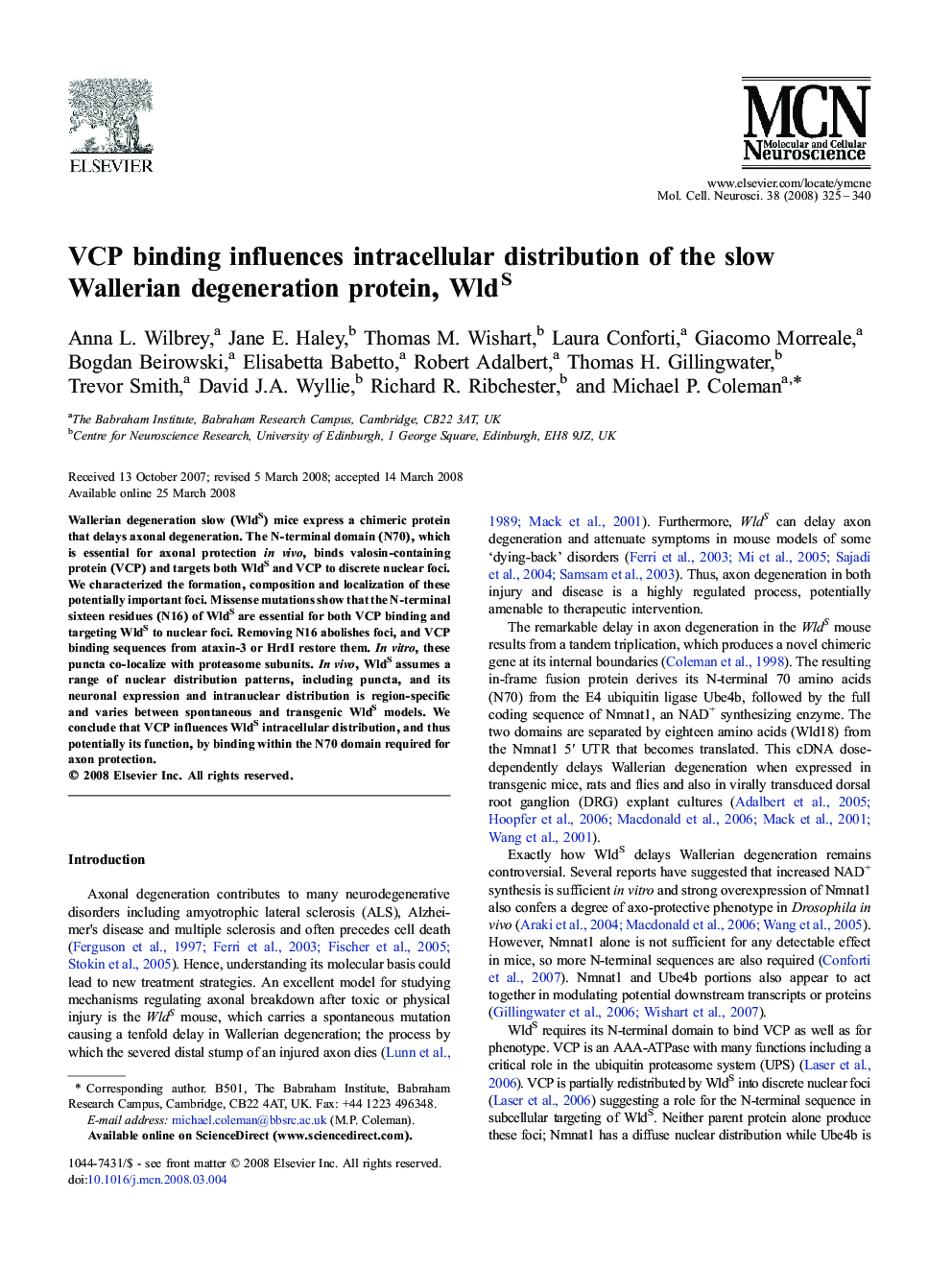| Article ID | Journal | Published Year | Pages | File Type |
|---|---|---|---|---|
| 2199039 | Molecular and Cellular Neuroscience | 2008 | 16 Pages |
Wallerian degeneration slow (WldS) mice express a chimeric protein that delays axonal degeneration. The N-terminal domain (N70), which is essential for axonal protection in vivo, binds valosin-containing protein (VCP) and targets both WldS and VCP to discrete nuclear foci. We characterized the formation, composition and localization of these potentially important foci. Missense mutations show that the N-terminal sixteen residues (N16) of WldS are essential for both VCP binding and targeting WldS to nuclear foci. Removing N16 abolishes foci, and VCP binding sequences from ataxin-3 or HrdI restore them. In vitro, these puncta co-localize with proteasome subunits. In vivo, WldS assumes a range of nuclear distribution patterns, including puncta, and its neuronal expression and intranuclear distribution is region-specific and varies between spontaneous and transgenic WldS models. We conclude that VCP influences WldS intracellular distribution, and thus potentially its function, by binding within the N70 domain required for axon protection.
